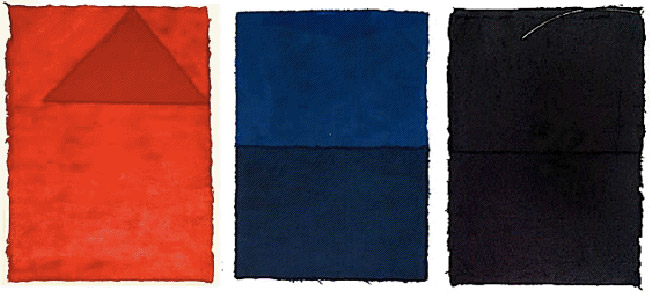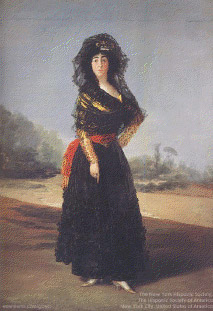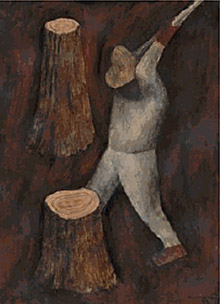Latin American Art Week in New York
This year I spent part of what I call 'Latin American Art Week' in New York City. Every year in mid-November, Sotheby's and Christie's hold their fall Latin American Art auctions. For the past 5 years, the PINTA Contemporary Art Fair has been held at the same time. All together it is a fantastic chance to keep up on what is happening with established and emerging artists.
Neither Christie's nor Sotheby's charges for the previewing the art to be auctioned in their elegant viewing rooms at Rockefeller Center and on York Avenue. The official catalogue will set you back $60 but Christie's provided me with an inexpensive version with thumbnail pictures of all the art for free.
As you would expect, the show was focused on well-known artists: most of the works were over 35 years old. From Mexico, Diego Rivera, Rufino Tamayo*, Francisco Toledo*, Gunther Gerzo, Francisco Zuniga*, Rafael Coronel*, Felipe Casteneda* and Gustavo Montoya* were represented (the asterisks indicate artists who are represented in our collection). From Colombia, Fernando Botero was well represented by both the most expensive paintings in the exhibit ($1.5 million) and only slightly cheaper sculptures.

Peru was represented by Fernando de Szyszlo*; Uruguay by Joaquin Torres-Garcia; Argentina by Emilio Pettoruti; Venezuela by Armando Reverón and Chile by Claudio Bravo and lots of Roberto Matta's. There was also a wide selection of Cuban art (which tends to be under-represented in the Bay Area: Wilfredo Lam, Rene Portocarrera, Victor Manuel and Jose Maria Mijares.
The one artist who rarely appears is Frida Kahlo. She did not produce many paintings and many of these are already in museums. When her work does appear, it sells for astronomic sums. Mary Ann Martin's Upper East Side gallery recently sold a small painting of hers of a vase of flowers on copper for $2.5 million.
Most of the works in the auction were priced in the tens or hundreds of thousands of dollars although there was a selection of newer works for $10,000 or less. My favorites among works by lesser known artists were wonderful still lifes by Miguel Padura (Cuba), crayon and charcoal drawings by Jose Bedia* (Cuba), and a wonderful painting of a pyramidal pile of hats by Roberto Fabelo (Cuba). As in all auctions, some of these pieces sold but others did not meet the minimum bids.
There are usually a few older pieces and this year there was a striking 19th portrait of Hernan Cortes about whom I have been studying in my class on Carlos Fuentes' El Espejo Enterrado (The Buried Mirror).
Another personal note: there was a series of enigmatic watercolors and pastels by Leonora Carrington, a British artist who lived and worked in Mexico. She was born in 1917 and to my amazement is still alive. These works had been purchased from a liquidation sale at the Brewster gallery in Greenwich Village where I purchased my first work of art, a print by Nadia Boulanger, as a gift for my parents.

The general quality of the art at the auction houses is very high and the best pieces are museum quality. It is a big deal for an artist to have her/his work sold in auction at Sotheby's or Christie's and dealers are not shy about advertising the fact.
Next stop was the Pinta Art Fair held at Pier 92 on the Hudson. This fair includes galleries from around the world. It was fun visiting galleries from New York, but most of the galleries were from out of the area (Miami) or out of the country (Bogotá, Buenos Aires, Mexico D.F., Madrid, London and Paris). There were some paintings but just as many photographic exhibits and video and installation art.
I was particularly drawn by works by two Argentinian artists, both of whom lived in Buenos Aires and based their work on photographs. When I asked the galleries representing them about their work, both responded, 'Why don't you talk to the artist, he/she is right here.'
So I had a chance to spend some time with Maria Noel, whose work on paper contains printed or handwritten texts, charcoal drawing, calligraphy, and old photographs by an English immigrant taken at the turn of the 20th century that she discovered in the National Archive. Several of works were inspired by the music of John Cage; others by poems by Dylan Thomas. Her work is always beautiful and evocative and I look forward to collecting it someday.
I also met Jose Andrés Videla whose works depict cityscapes from Buenos Aires that are based on photographs but are made with graphite on Formica. The work exists in shades of gray world and is quite beautiful.

I didn't have the chance to meet the Cuban Roberto Fabelo but I fell in love with his work. His work was one of the few that was also represented in the auction. His drawing, of heads in particular, is amazing and reminds me of the Mexican artist, Jose Luis Cuevas, but with less eccentricity/ perversity.
Finally, I took a side trip to the Hispanic Society of America which is located on 155th and Broadway, in between Harlem and Washington Heights and a light year away from Museum Mile on the East Side. There is a large statue of El Cid, the problematic Spanish hero, in front of the museum and when you walk into the museum the first thing you see is Goya's Duchess of Alba. I, like many a visitor, asked the guard if this was a copy of the original in the Prado. 'This is the original', he replied. Incredible, one of the most famous paintings in the world in an out-of-the way museum located in a marginal neighborhood. The museum had four other Goya's, a nice Velasquez, two outstanding Zurburán full-length portraits of saints, and a room full of works by Joaquin Sorolla, a late 19th and early 20th century portraits and landscape painter. In one large room at the museum, the walls are completely covered by Sorolla's colorful depictions of famous sites in Spain. The next time you're in New York it is worth taking the subway uptown to visit this amazing museum.